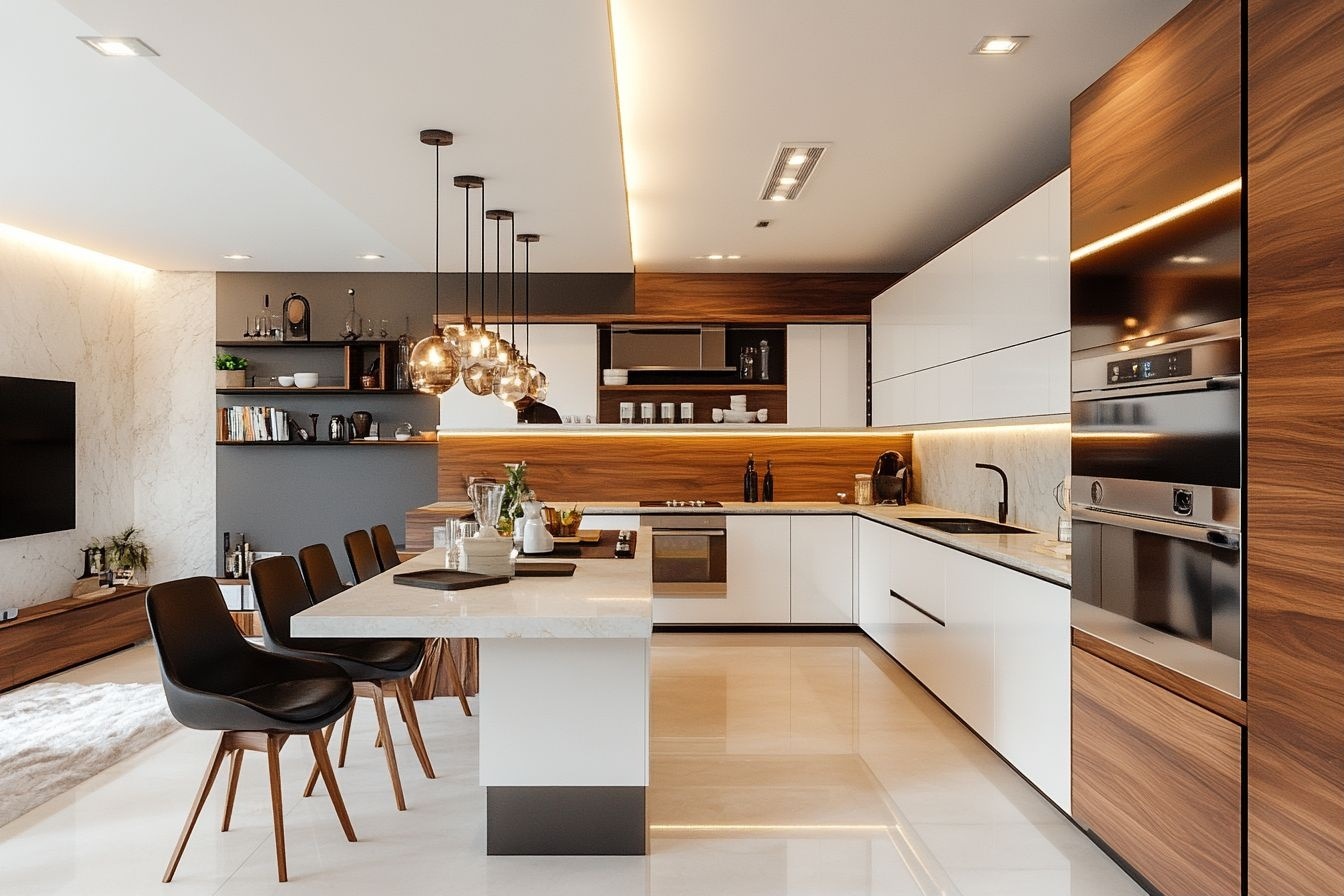Choosing durable surfaces for regular food preparation
Durable kitchen surfaces make everyday cooking safer and more efficient. This article outlines practical choices for countertops and work areas, balancing longevity, maintenance, and sustainability. It highlights how materials, layout, storage and appliances affect daily prep and offers guidance for renovation decisions that support a functional kitchen workflow.

Selecting durable surfaces for regular food preparation means balancing performance, maintenance and how the space supports daily tasks. Durable materials resist stains, heat and scratches while remaining hygienic and easy to clean. Choices for countertops and worktops influence how you prep, whether you use heavy appliances or need generous clear zones for chopping and plating. Consider how the surface interacts with storage and layout: a resilient countertop paired with accessible storage and good organization reduces wear and improves workflow. Also factor in lighting and ventilation so surfaces remain clean and usable over time.
Materials and surfaces: what to consider?
Different materials offer distinct durability profiles. Natural stone like granite and engineered quartz are dense and resist stains when sealed properly; stainless steel is nonporous and tolerant to heat; hardwood can be made durable with finishes but needs more ongoing care. Porosity, scratch resistance, and heat tolerance are key attributes to compare. Surfaces that are easy to sanitize reduce food-safety risks during prep, and selecting materials compatible with your typical cooking methods (frequent baking, heavy chopping, or hot pots) helps avoid premature damage. Think long term about maintenance routines when choosing materials.
Countertops, prep and workflow
Countertops are central to food preparation workflow. Allocate dedicated prep zones with generous, continuous surfaces to allow safe chopping and assembly; minimize seams where possible to limit bacteria traps. Use cutting boards to protect counters and preserve edge finishes. Consider edge profiles that are comfortable and practical for cleaning. Planning countertop heights and landing spaces near appliances reduces back-and-forth and increases efficiency. Durable countertop choices paired with a considered workflow reduce replacement frequency and make daily prep smoother.
Storage, layout and organization
Effective storage and thoughtful layout protect surfaces and support efficient prep. Place frequently used items in easy-to-reach drawers and cabinets to avoid cluttering countertops. Integrate organization solutions—pull-out drawers, vertical dividers for tableware, and assigned zones for prep tools—to limit unnecessary contact with work surfaces. A well-planned layout positions storage relative to appliances and prep zones so workflow follows a logical path: store cutting boards near prep areas, keep spices and oils close to cooking zones, and reserve clear counter space for staging and plating.
Appliances, lighting and ventilation effects
Appliances, lighting and ventilation all influence how well surfaces hold up. Heavy appliances can scratch or dent if dragged; install protective mats or dedicated stands. Bright, layered lighting helps you see spills and wear early, so surfaces can be cleaned promptly. Adequate ventilation removes steam and grease that can degrade finishes over time; a properly sized hood or exhaust fan reduces surface buildup. Choose appliances and placements that minimize splatter onto vulnerable surfaces and make cleaning straightforward.
Ergonomics, seating and tableware considerations
Ergonomics affects how surfaces are used and preserved. Counter height should match your comfort for chopping and prep to avoid repetitive strain and accidental damage caused by awkward postures. Seating at islands or breakfast bars should leave enough clearance so chairs don’t scuff surfaces; select durable edge finishes where seating contacts the countertop. Store tableware in accessible, stable locations to prevent accidental drops on work surfaces. Small adjustments in ergonomics and seating arrangements can reduce wear and improve the overall prep experience.
Sustainability and renovation choices
When renovating, balance lifespan and environmental impact. Look for materials with recycled content or certified sourcing, and prioritize durable surfaces that reduce replacement frequency. Local services and contractors in your area can advise on materials that suit your climate and usage patterns while meeting sustainability goals. During renovation, plan for seamless transitions between countertops, backsplashes and cabinetry to limit joints that collect debris. Choosing durable, repairable finishes often yields lower lifecycle impact than repeatedly replacing lower-quality options.
Choosing surfaces for regular food preparation involves more than material selection: it requires integrating countertops with storage, layout, appliances, lighting, ventilation and ergonomics to create a resilient, hygienic kitchen. Thoughtful organization and sustainable renovation choices extend the useful life of surfaces and support an efficient prep workflow that suits daily cooking habits.





